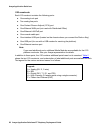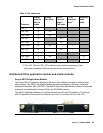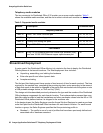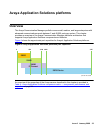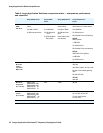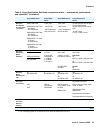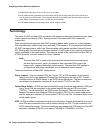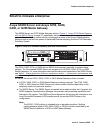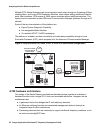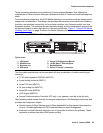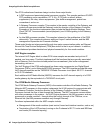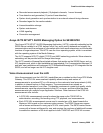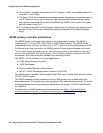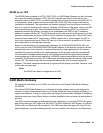
Avaya Application Solutions platforms
36 Avaya Application Solutions IP Telephony Deployment Guide
Terminology
The terms IP-PNC and fiber-PNC are used in this chapter to distinguish between the two types
of port network connectivity (PNC). Synonyms are IP-connected and Fiber-connected,
respectively.
Fiber-connected port networks (fiber-PNC) transport bearer traffic (voice, fax, video) between
PNs over fiber-optic cables using circuit-switched (TDM) protocol. IP-connected port networks
(IP-PNC) transport bearer traffic over Ethernet cables using packet-switched Internet Protocol
(IP). Starting with Communication Manager release 3.0, both types of port network connectivity
can be combined in the same system. This allows a system to be converted from fiber-PNC to
IP-PNC gradually, one port network at a time, if desired.
Note:
Note: The term fiber-PNC is used in this document with almost the same meaning as
the term multi-connect, which, in addition to fiber-connected PNs to carry the
bearer traffic, implies a dedicated control network. The term fiber-PNC applies to
configurations with either a dedicated on non-dedicated control network.
There are three kinds of fiber-PNC configurations:
Direct connect - One port network (PN), the "control PN," is IPSI-connected to the control
network and one or two additional PNs are fiber-connected to the control PN. The call
controller can be an S8500 Server or an S8700-series Server pair. The fiber connections
are between the expansion interface (EI) circuit packs (TN570) in the PNs.
Center Stage Switch - All PNs are fiber-connected through the center-stage switch (CSS) and
one or more PNs are connected to the control network through an IPSI circuit pack
(TN2312). The call controller is an S8700-series Server pair. The fiber connections are
between the switch node interface (SNI) circuit packs (TN573) in the switch node carrier
and the expansion interface (EI) circuit packs (TN570) in the PNs, or between SNIs in two
switch-node carriers.
ATM - All PNs are fiber-connected through the Asynchronous Transfer Mode switch and one or
more PNs are-connected to the control network through an IPSI. The call controller is an
S8700-series Server pair. The fiber connections are between the ATM switch and the ATM
expansion interface (ATM-EI) circuit packs (TN2305B or TN2306B) in the PNs.
2. S8300/G350 trunks either H.323 or SIP. Up to 15 IP trunks
3. Each G250 has built-in Standard Local Survivability (SLS) that provides basic services for local IP and
non-IP phones and PSTN trunks. The G150 also has built-in survivability with features similar to those of
the IP Office communication product, on which the G150 is based.
4. H.248 Media Gateways include G250, G350, IG550, G700 and G450.



